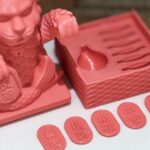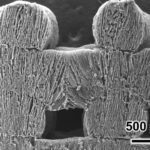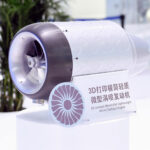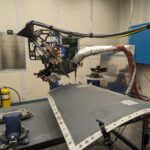Microalgae, such as Odontella aurita and Tetraselmis striata, are emerging as valuable resources for producing eco-friendly materials used in 3D laser printing. A team of international researchers, led by Prof. Dr. Eva Blasco at Heidelberg University’s Institute for Molecular Systems Engineering and Advanced Materials (IMSEAM), has successfully developed innovative bioinks derived from these microalgae. These bioinks enable the precise fabrication of complex, biocompatible 3D microstructures, with potential applications in creating implants and scaffolds for 3D cell cultures.

Microalgae: A Sustainable Source for 3D Printing
3D laser printing, particularly two-photon 3D laser printing, is renowned for its ability to manufacture intricate micro- and nanoscale structures with exceptional precision. Traditionally, this process has relied on petrochemical-based polymers as the primary ink material. However, these polymers pose environmental challenges, such as contributing to fossil fuel depletion, greenhouse gas emissions, and containing toxic components.
Microalgae offer a more sustainable alternative. Their rapid growth, CO2-fixation during cultivation, and natural biocompatibility make them ideal candidates for producing environmentally friendly materials. Despite these advantages, microalgae have been largely overlooked in light-based 3D printing until now.
Prof. Blasco’s research team, working at the intersection of macromolecular chemistry, materials science, and 3D nanofabrication, has made a breakthrough by extracting biocompatible materials suitable for high-resolution 3D laser printing from microalgae. They focused on two species, *Odontella aurita* and *Tetraselmis striata*, known for their high lipid content in the form of triglycerides. These triglycerides were extracted and functionalized with acrylates to enable rapid curing under light irradiation. The green pigments present in the microalgae served as natural photoinitiators, triggering the chemical reactions needed to solidify the ink into three-dimensional structures.
Advancing Biocompatible 3D Printing
One of the most significant achievements of this research is the elimination of potentially toxic additives commonly found in conventional inks. “In this way, we avoid using potentially toxic additives like the photoinitiators used in conventional inks,” explains Clara Vazquez-Martel, the study’s first author and a doctoral candidate in Prof. Blasco’s team.
Using the newly developed microalgae-based ink, the team successfully produced various 3D microstructures with intricate features, including overhanging roofs and cavities. These structures were then tested for biocompatibility in cell culture experiments. The results were impressive, with a nearly 100 percent survival rate observed in cells cultured on the 3D microscaffolds over 24 hours.
Prof. Blasco emphasized the broader implications of their findings, stating, “Our results open up new possibilities not only for more sustainable 3D printing with light but also for life science applications – from 3D cell cultures to biocompatible implants.”
The research has been published in Advanced Materials and is available here.










